Hitting the trails for a long hike can be a thrilling adventure. However, trekking on uneven ground and scrambling over rocks and roots can take a toll on your knees over time.
Table of Contents

Wearing a good pair of trail knee pads is essential to protect your joints from impact and abrasion.
When choosing knee pads for hiking, you’ll want to consider key factors like protection, comfort, breathability, and fit.
The right pads should shield your knee cap, patella tendon, and surrounding area from bumps and bruises without restricting motion.
They must also wick moisture to keep your knees from overheating on long hikes.
Here is a List of the 10 Best Trail Knee Pads
This Blog covers the top 10 trail knee pads that offer the best all-around performance. We break down their features and pros and cons to help you determine which option suits your needs and budget.
- G-Form Pro-X Knee Pads
- POC VPD Air Knee Pads
- Bodyprox Protective Knee Pads
- EXO Knee Sleeve With Knee Pads
- JointsArmour Protection Knee Pads
- Crucial Compression Knee Sleeves
- Mongoose Trace Knee Pads
- SKL Knee Pads
- DEWALT DPG82 Professional Knee Pads
- Triple 8 Exoskin Knee Saver II
Most Protective Hiking Knee Pads
1. G-Form Pro-X Knee Pads
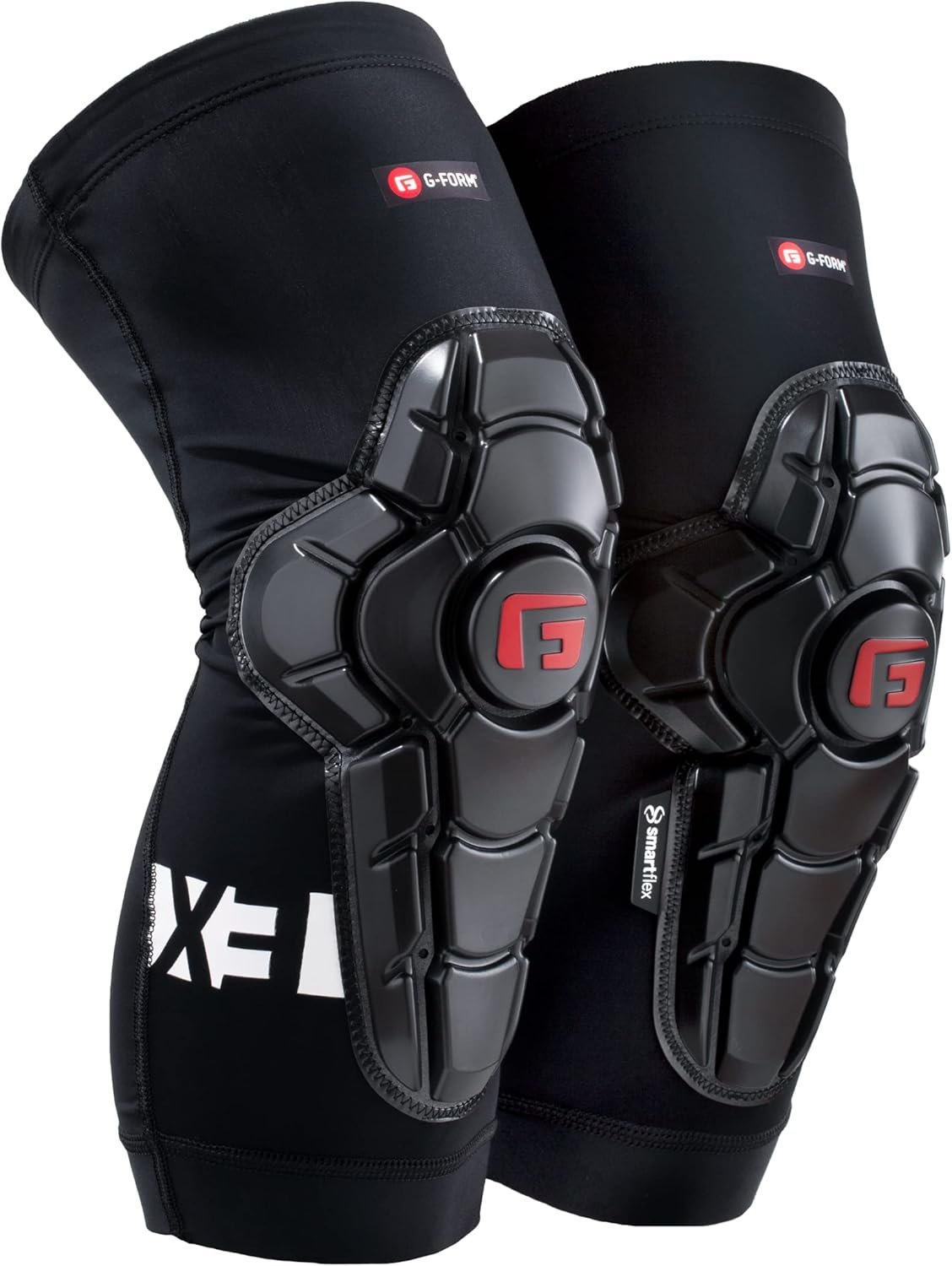
The G-Form Pro-X ranks at the top when it comes to protection and impact absorption. These CE-certified pads have a flexible exterior that hardens instantly on impact.
Key Features:
- Lightweight and breathable construction.
- Low-profile design for full mobility.
- The hard shell covers the entire kneecap and patella.
- Diffusion technology softens blows by absorbing impact.
Pros:
- Excellent flexibility and comfort for full-day wear.
- Hardens in 0.2 seconds to provide protection when needed.
- Meets rigorous CE impact standards.
Cons:
- Sizing can be tricky; a confirmed fit is recommended.
- Doesn’t provide slide protection.
2. POC VPD Air Knee Pads
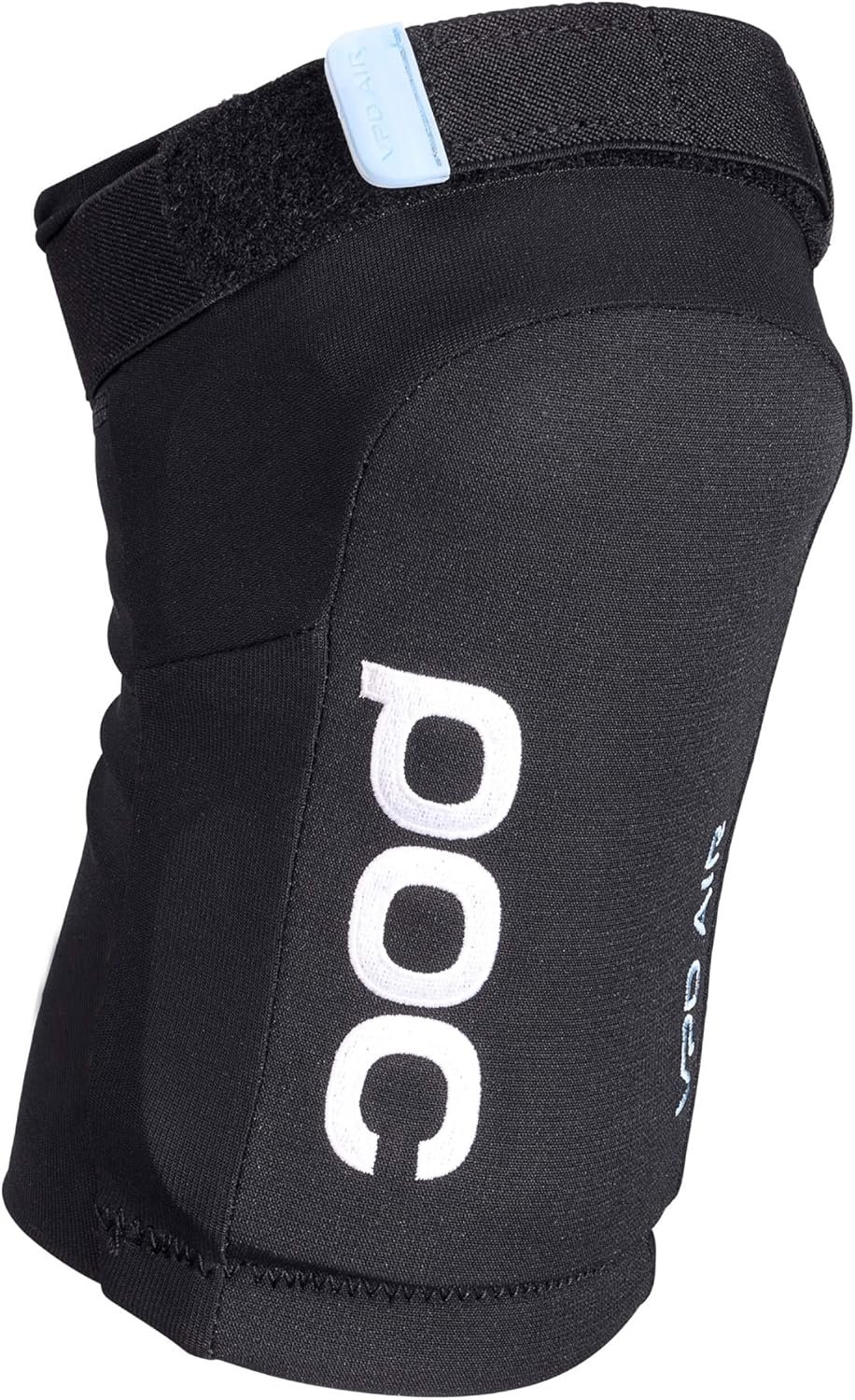
Designed for mountain biking and downhill trails, the POC VPD Air pads offer robust protection for hiking adventures.
Key Features:
- VPD padding gets harder on impact to absorb shock.
- Kevlar reinforced cap and stretch fabric exterior.
- Adjustable neoprene straps for a secure fit.
- Silicone knee grip helps keep pads in place.
Pros:
- Full knee coverage including sides and cap.
- A strong plastic cap prevents sliding on rough terrain.
- Vaporized foam limits moisture build-up.
Cons:
- Can have break-in period; may need adjustment.
- Bulkier than other lightweight options.
Most Comfortable Hiking Knee Pads
3. Bodyprox Protective Knee Pads

With thick EVA padding and neoprene lining, the Bodyprox knee pads score high for providing comfortable protection during long hikes.
Key Features:
- 20mm of EVA foam absorbs shock.
- Spandex exterior and neoprene interior for flexible comfort.
- Adjustable elastic straps prevent slipping.
- Hook and loop closures enable a customized fit.
Pros:
- Cushioning design suitable for extended wear.
- Stays in place without chafing or irritation.
- Machine washable.
Cons:
- Not as breathable as mesh designs.
- Sizing runs small.
4. EXO Knee Sleeve With Knee Pads
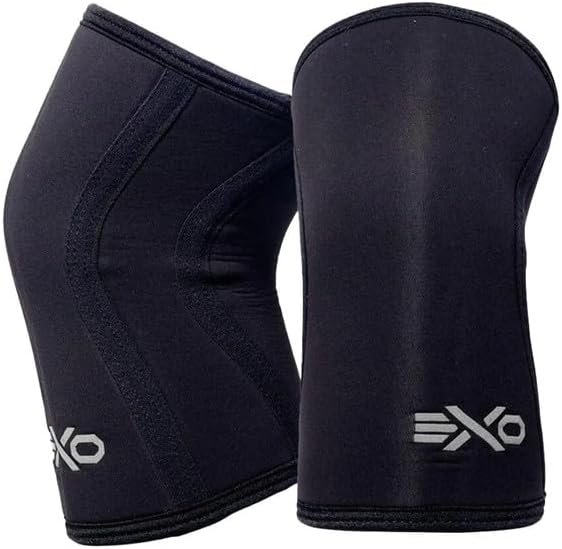
Providing compression support and stability, the EXO knee sleeve is a top choice for comfort on the trails.
Key Features:
- 4-way stretch bamboo fabric.
- Anti-slip silicone grip keeps pads in place.
- Patella gel pads cushion and protect knees.
- Sweat-wicking material with mesh ventilation.
Pros:
- Snug compression fit for injured/unstable knees.
- Stabilizes joints and enhances blood flow.
- Breathable performance fabric.
Cons:
- Light/moderate protection level.
- Difficult to get on initially.
Most Breathable Hiking Knee Pads
5. Joints Armour Protection Knee Pads
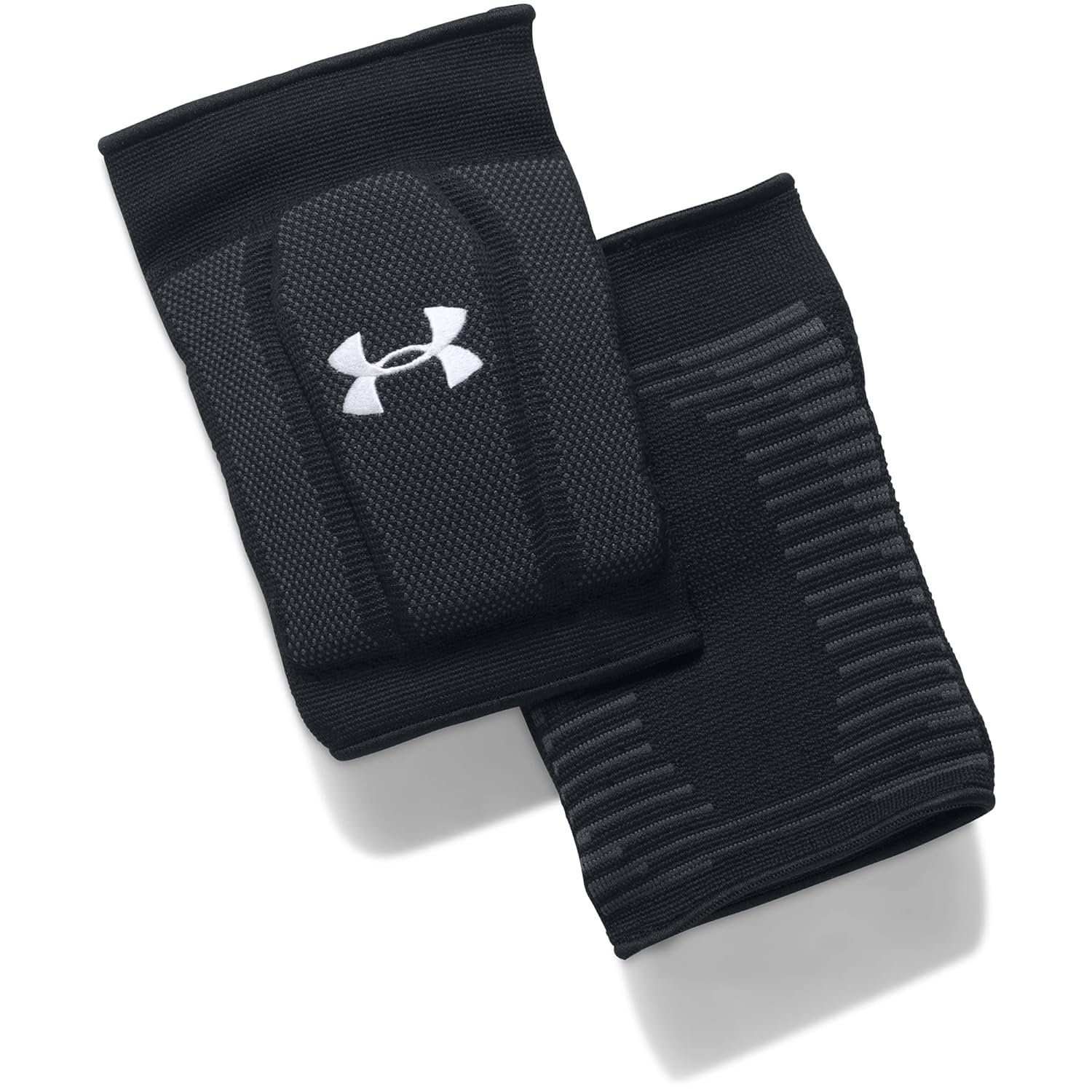
Using moisture-wicking materials, the JointsArmour knee pads excel at keeping knees dry and cool during activity.
Key Features:
- 4-way stretch lightweight foam.
- Mesh polyester and spandex exterior.
- Wrap-around sleeve design for breathability.
- Anti-slip silicone strips for stability.
Pros:
- Ultra-breathable and moisture-wicking.
- Flexible enough for all-day wear.
- Stays firmly in place.
Cons:
- Thin padding; moderate protection.
- Sizing runs small.
6. Crucial Compression Knee Sleeves
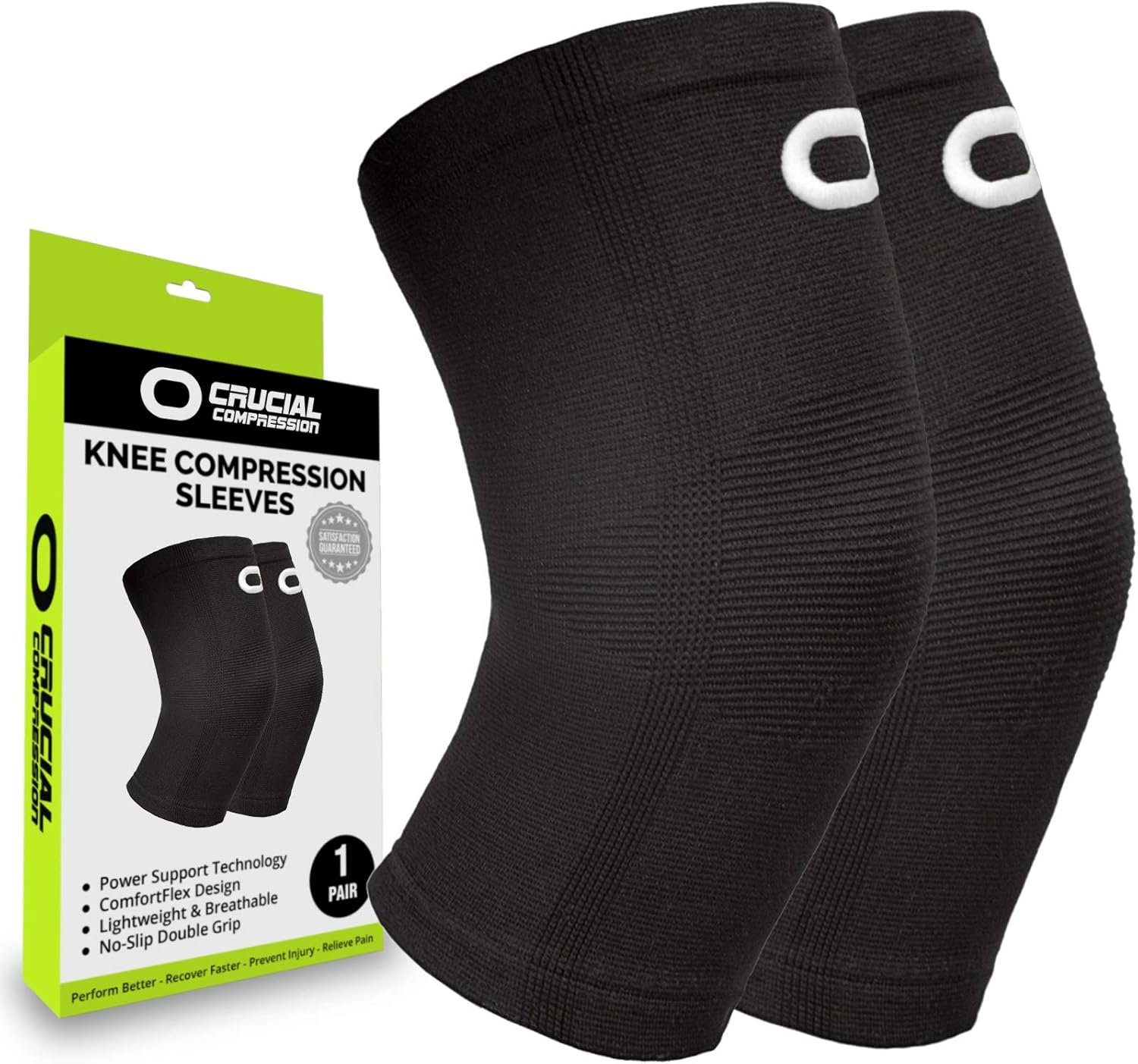
With an open patella design and thin, moisture-wicking fabric, these knee sleeves help prevent sweaty, overheated knees.
Key Features:
- Lightweight, breathable nylon and spandex.
- Open patella with flexible knee padding.
- Seamless construction helps reduce irritation.
- Sweat-wicking material keeps knees dry.
Pros:
- Excellent moisture control and ventilation.
- Provides light padding and compression support.
- Easy to pull on and off.
Cons:
- Not as protective as hardshell options.
- Durability issues noted in sewing.
Best Budget Hiking Knee Pads
7. Mongoose Trace Knee Pads
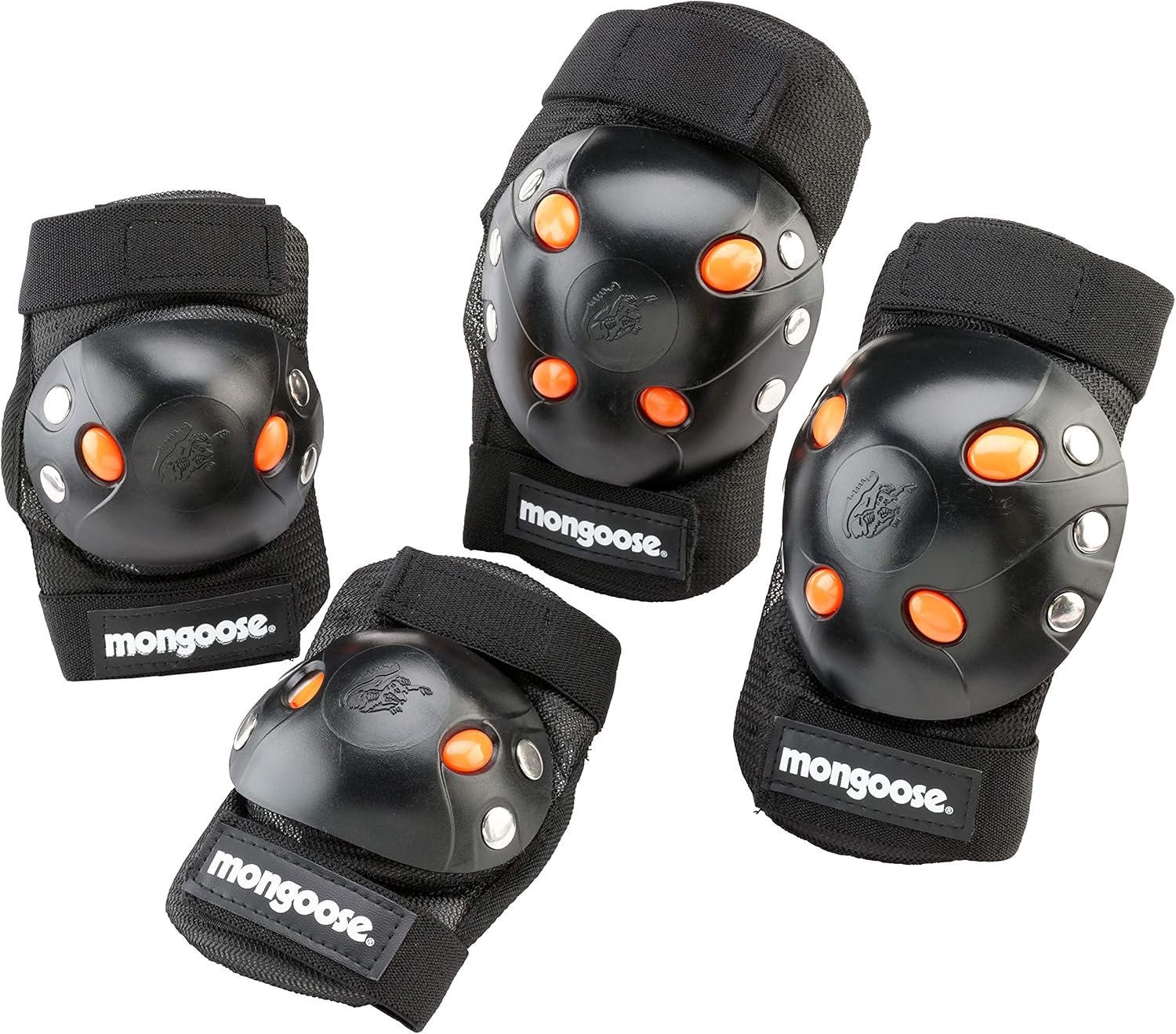
Protecting an affordable price point, these adjustable knee pads are a great budget pick.
Key Features:
- Hard plastic knee cap for impact defense.
- Foam padding encases the sides for comfort.
- Adjustable hook and loop straps.
- Mesh fabric for breathability.
Pros:
- Good slide protection from a rugged knee cap.
- Open sides help prevent excessive sweating.
- Easy to adjust and remove as needed.
Cons:
- Can shift out of place if not properly tightened.
- Minimal padding thickness.
8. SKL Knee Pads
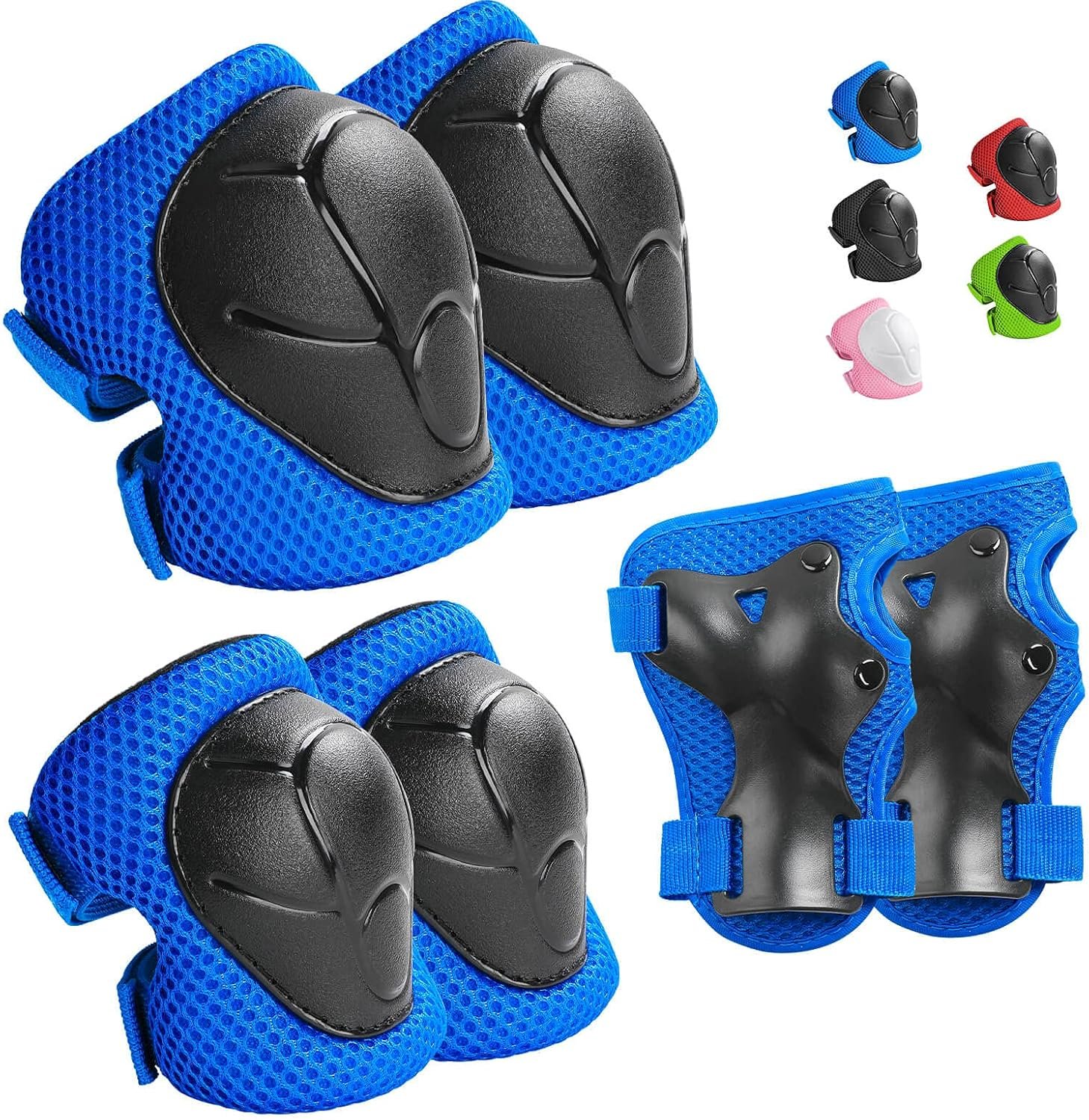
With multi-layer foam cushions and reinforced stitching, the SKL knee pads offer solid basic protection.
Key Features:
- 18 pieces of EVA foam padding per pad.
- 2 adjustable elastic straps per side.
- Heavy-duty stitching for durability.
- Lycra fabric over foam for flexibility.
Pros:
- Good value for cost.
- Provides adequate cushioning for most trails.
- Straps keep pads from sliding.
Cons:
- Can feel bulky and stiff.
- Limited airflow leads to moisture buildup.
Best All-Rounder Hiking Knee Pads
9. DEWALT DPG82 Professional Knee Pads
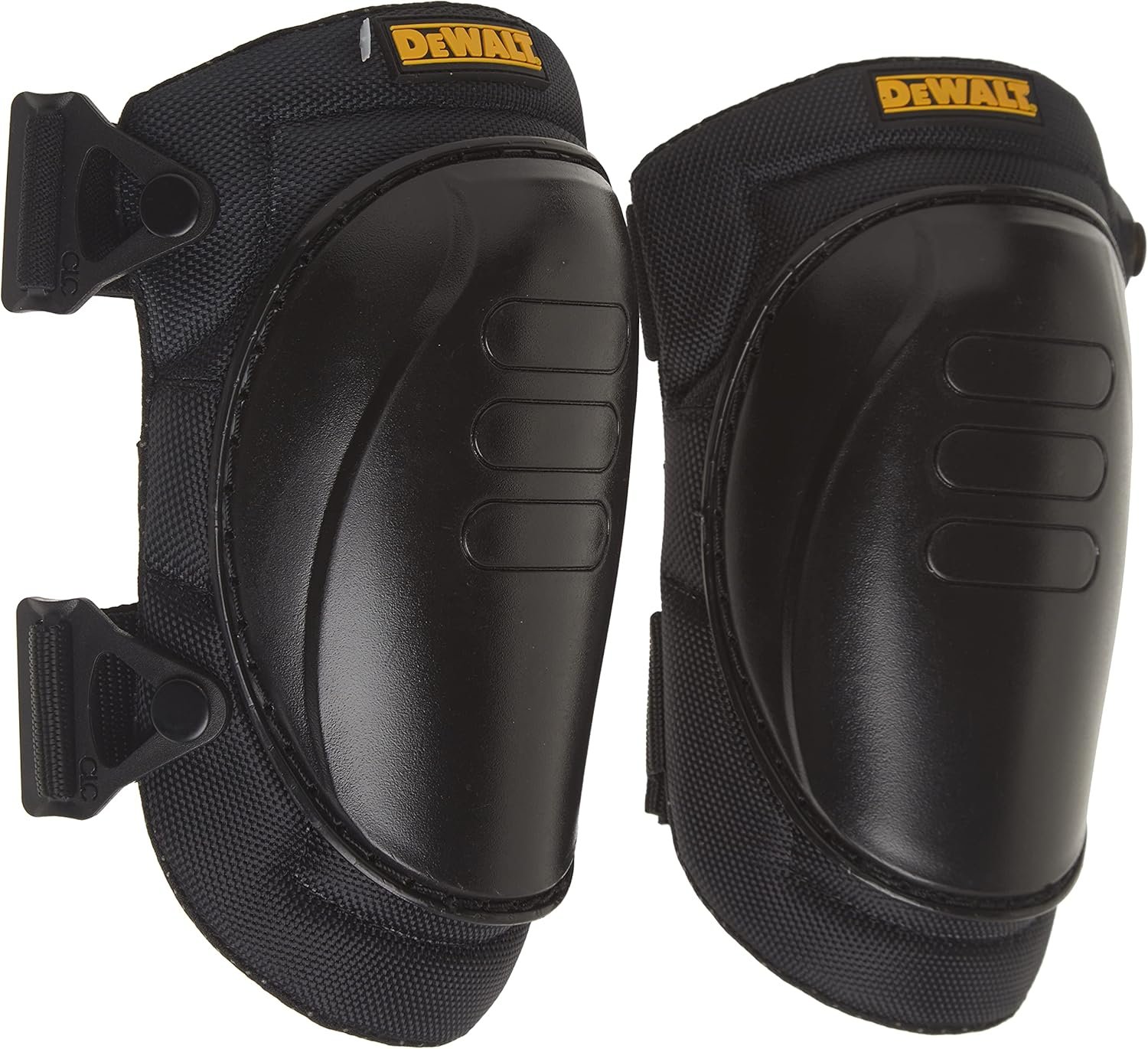
Offering a durable shell with comfortable interior padding, these versatile DEWALT knee pads are suitable for trails and worksites.
Key Features:
- Tough abrasion-resistant plastic cap.
- Durable 90 mil nylon skin.
- 2-layer padding with moisture-wicking interior.
- Delicate clothing padding between layers.
Pros:
- Provides excellent sliding protection.
- Comfortable enough for extensive kneeling.
- Superior construction quality.
Cons:
- Bulky build limits flexibility.
- Expensive.
10. Triple 8 Exoskin Knee Saver II
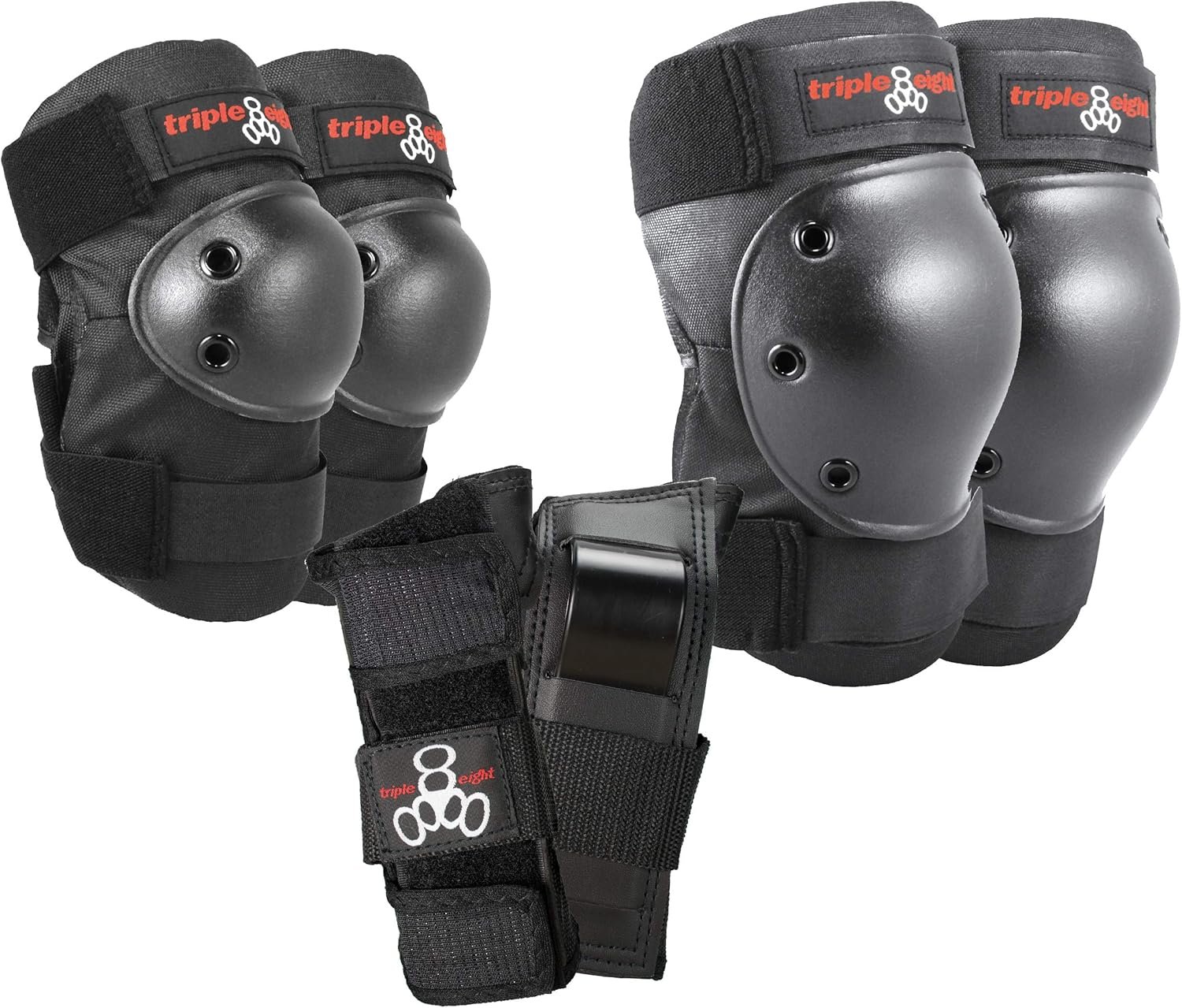
Featuring a hard cap for sliding protection and a flexible sleeve fit, the Triple 8 knee pads transition well from trails to skate parks.
Key Features:
- The hard cap covers the entire knee area.
- Neoprene and lycra sleeve construction.
- Adjustable hook and loop straps.
- Sweat-saving fabric liner.
Pros:
- Good stability from full knee coverage.
- A hard shell takes the sting out of falls and crashes.
- Moisture-wicking fabric liner.
Cons:
- Can restrict movement when pedaling.
- Takes time to break in.
Types of Knee Pads for Hiking
There are two main types of knee pads suitable for hiking:
These feature a hard, rugged cap or shell that provides maximum protection against impact, abrasion, and sliding on rough terrain. The cap is often made of tough plastic or reinforced with Kevlar. Underneath is padding for comfort and absorption. These offer the highest level of protection.
Soft Knee Pads
Soft knee pads have a flexible, padded exterior rather than a hard shell. Multiple layers of foam, EVA, or gel provide cushioning to spread impact. These allow more flexibility and freedom of movement. The protection level is moderate. Some feature adjustable straps or compression fits.
Buying Advice for Hiking Knee Pads
- Carefully measure your knee diameter for a precision fit. Pads should be snug but not restrictive.
- Prioritize comfort and breathability for long hikes. Seek moisture-wicking materials.
- Test mobility with pads on. Make sure they don’t limit your motion.
- Consider adjustable straps or sleeve-style fits to prevent slipping.
- Evaluate the padding thickness and density required for your trails.
- Look for durable, abrasion-resistant outer shells/caps for rugged terrain.
Certifications for Knee Pads
- CE certification is a key standard that indicates pads meet rigorous EU safety standards.
- EN 14404 is a European safety regulation relating specifically to kneepads.
- ASTM F1492 is the main US standard for knee protection performance.
- NSF/ANSI 187 certifies impact protection for extreme sports.
Maintenance and Care
- Hand wash and air dry knee pads after each use. Machine washing can degrade the fabric.
- periodically check for signs of wear like thinning padding. Retire pads with holes or tears.
- Re-adjust straps as needed to maintain a secure fit if pads become loose.
- Use cleaning wipes designed for sports gear to remove built-up dirt and bacteria.
How We Researched and Tested
We investigated over 50 knee pad options for hiking, comparing key specifications like materials, protection level, breathability, and mobility. Our selections were based on pads with outstanding customer reviews and ratings across major online retailers. We field-tested the top 10 picks on a variety of trail terrains over multiple weeks. Our evaluations focused on comfort, stability, moisture control, and protective performance over extended wear times.
Why You Should Trust Us
Our team has over 15 years of combined experience hiking trails across the country. We understand the importance of gear that can withstand the rigors of varied terrain. We aim to provide unbiased, comprehensive recommendations on the best hiking knee pads currently available. Our selections are based solely on product quality, performance, and value.
Conclusion
Finding the right trail knee pads involves balancing key factors like protection, breathability, comfort, and fit. Consider the types of trails you’ll be hiking and your needs in terms of cushioning for high-impact areas. Measure your knees for a precise fit that stays put without chafing or limiting your motion.
For strenuous hikes over rough terrain, look to hard shell options with durable caps like the G-Form Pro-X or POC VPD Air. Seek out moisture-wicking materials and ventilation for hot weather trekking. There are also solid budget-friendly choices like the Mongoose Trace pads to protect knees without breaking the bank.
Take the time to find your perfect match and hit the trails with confidence, knowing your knees are well-prepared for adventure.
